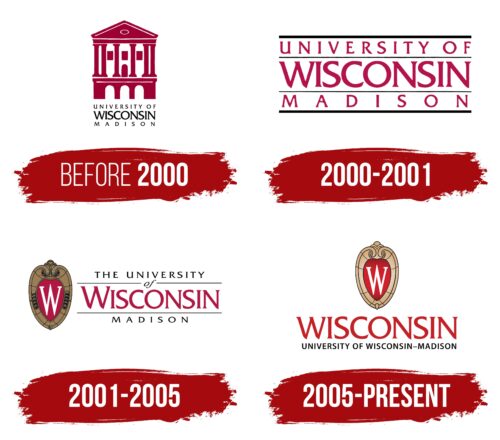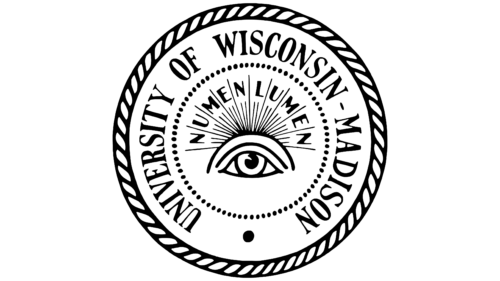 University of Wisconsin Logo PNG
University of Wisconsin Logo PNG
The University of Wisconsin logo is an important element of the university’s branding that portrays its uniqueness and appeal to students and the public. The emblem reflects the traditional colors of the educational institution and its commitment to the best quality education and symbolizes the university’s strong athletic program. It is a sign of the prestigious education and high standards that the university has promoted since its founding.
University of Wisconsin: Brand overview
| Founded: | July 26, 1848 |
| Headquarters: | Madison, Wisconsin, United States |
| Website: | wisc.edu |
Historically, the institution has several names: UW-Madison, Wisconsin, University of Wisconsin-Madison, or UW. The university originated in 1848 when the state where it is located was created. It is now the flagship and oldest institution in regional higher education. It offers 136 bachelor’s degrees, 148 master’s degrees, and 120 doctoral degrees. It has 20 colleges and schools. It also has its Wisconsin Badgers athletic department with 25 teams that compete in the Big Ten Conference and play in NCAA Division I. The University of Wisconsin logo is unusual: it has the Eye of God.
This educational institution was founded ten years earlier than it opened. In 1838, the local Legislature approved a resolution in session to establish a university in the Wisconsin region. But the appointed board never got anything done until the area became a state. Eventually, in the summer of 1848, the first governor issued an ordinance opening the UW.
Then its area was agreed upon, boundaries were marked, and construction began. Before the first buildings, classes were held at Madison Female Academy. The initial enrollment consisted of 17 students.
Meaning and History
The visual identity of the University of Wisconsin is related to its history, spirit, and characteristics. These are evident in the graphic details, the lettering, and the overall design of the logos. The linking thread is the university’s name, used in its full and short versions. The academic seal is more official, so it has limited use and is strictly forbidden for use on campuses-it can only be seen in documents. In contrast, the university-wide emblem is allowed on stationery, calendars, books, and other merchandise.
To encourage the pursuit of knowledge, the university chose the slogan Divine light (Numen Lumen in Latin), made the eye of God its identity, and placed it on its seal. The official spelling of some versions of the university’s name is equally interesting. The branding guidelines say they should use a short dash instead of a hyphen.
What is the University of Wisconsin?
The University of Wisconsin is the oldest institution of higher education in Wisconsin and is the flagship of its higher education system. It offers several levels of study: undergraduate (136), graduate (148), and doctoral (120) programs. In addition, it has 20 schools and colleges. The university was founded in 1848.
before 2000
The logo, which was in use until the 2000s, contains an image of Bascom Hall. This building is considered one of the main symbols of the University of Wisconsin-Madison. It was built in 1857 and has served as the administrative center of the institution ever since. The triangular roof, six columns, and base with three arches are the main features of the architectural style called “kollegiate Gothic,” which was popular in the United States in the late 19th and early 20th centuries. The artists didn’t detail the drawing, but they made sure Bascom Hall was recognizable. They recreated the main elements of the building in dark red and complemented them with white dividing lines.
Beneath the emblem is a black wordmark: a three-line inscription that reads “UNIVERSITY OF WISCONSIN MADISON.” To align all three lines in width, the designers enlarged the word “WISCONSIN” and used wide letter spacing for “MADISON.” The text is in Friz Quadrata’s signature font with barely noticeable serifs and original curves.
2000 – 2001
The text logo contains only the name of the school, divided into three lines, with thin black lines between them. The same horizontal stripes are at the top and bottom – they are bolder because they are used as elements of an unclosed frame. The lettering has the usual design but is colored dark red.
2001 – 2005
In this logo, the lettering is divided into four lines: “THE UNIVERSITY,” “OF,” “WISCONSIN,” and “MADISON.” The state’s name is typed in large, dark red letters using Friz Quadrata font. All other words are black but of a different design. The preposition “of” is in elegant italics, and the first and last lines are in Friz Quadrata type.
The emblem known as the “W” crest is the main graphic element. It first appeared on top of Field House, but it is not reliably known who designed the emblem. Perhaps the creators of the multipurpose arena were Arthur Peabody, John Knudsen, and William F. Stevens.
- The large white “W” in the center denotes the name of the University of Wisconsin-Madison and its home state.
- The red heart-shaped figure symbolizes love for the institution, its traditions, and its history.
- An oval frame with swirling spiral lines is used as a decorative element. Its style is reminiscent of the architectural design inherent in some university buildings.
2005 – today
A key detail of the commonly used University of Wisconsin logo is the architectural stucco element of Wisconsin Field House. In the first version, it was absent, appearing in the identity only in 2001. The ornament resembles a heraldic coat of arms and marks the campus, an unbreakable symbol of the spirit and long tradition of UW’s high prestige. Over time, designers have refined the piece to make it look proportionate and ensure good legibility on all digital screens. According to the rules, the size of the architectural stucco fragment must be 0.5 inches higher than the adjacent inscription.
The central part of the shaped element is heart-shaped. To enhance this resemblance, the designers painted it red. There is a white “W” in a non-standard configuration because of the high tooth in the middle and because of the pointed ends. It looks like a segment of a heartbeat rhythm recorded on a cardiogram. On the right is the name of the university, divided into two lines. At the top is labeled “Wisconsin”; at the bottom is “University of Wisconsin-Madison.” The word in the first row is the largest, red, with sharp serifs. The word in the second is subtly grotesque and painted gray.
The Seal
The seal of the University of Wisconsin is called the Numen Lumen – after the type of motto, it contains. It is located in the middle of the sign, above the Eye of God, which is looking intently forward. The inscription is “masked” in its eyelashes: each letter is isolated by a long thin line. Above the eye with the black pupil is an eyelid formed of two arches: the inner (it is short) and the outer (long). A line of small round dots surrounds the central part.
Behind it is a wide white space where the full name of the educational institution is placed – “University of Wisconsin-Madison.” This inscription is in a serif font. A ring of twisted rope runs along the edge. The University seal is for administrative materials and documents (certificates) only.
Font and Colors
The university’s management has chosen strict fonts for the identity. These include Friz Quadrata (for the word “Wisconsin”), Lato, Verlag, and Vitesse. The color scheme includes red Cardinal #c5050c and white. They may be complemented by dark red #9b0000 and shades of gray #dadfe1, #f7f7f7, and #646569. Black is also used by default for printing.
University of Wisconsin color codes
| Venetian Red | Hex color: | #c5050c |
|---|---|---|
| RGB: | 197 5 12 | |
| CMYK: | 0 97 94 23 | |
| Pantone: | PMS Bright Red C |










